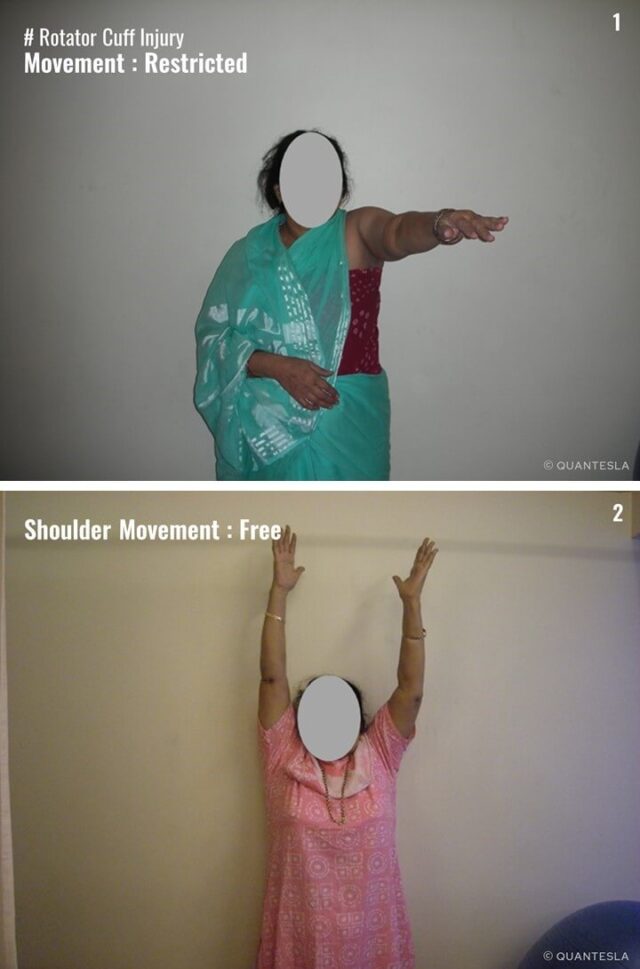Madhavi, a 61-year-old resident of Pune, embarked on a challenging journey when she was confronted with a rotator cuff injury. Her ordeal began with persistent shoulder pain that escalated over six months, severely hampering her daily activities and diminishing her quality of life. Routine tasks such as dressing, cooking, and even simple gestures like waving became excruciating endeavors.
The complexity of her condition was further compounded by her long-standing battle with Non-Insulin Dependent Diabetes Mellitus (NIDDM), a condition she had been managing for two decades. This type of diabetes can impair the body’s healing processes, thereby presenting additional challenges to recovery from musculoskeletal injuries.
Upon diagnosis by an orthopedic surgeon, Madhavi underwent arthroscopic repair, a minimally invasive surgical procedure aimed at mending the torn tissues of her rotator cuff. Post-surgery, her treatment plan transitioned to physiotherapy, a critical phase designed to restore function and movement to the affected shoulder.
During her physiotherapy regimen, Madhavi was introduced to a graduated exercise therapy program. This program was meticulously structured, with each session tailored to incrementally enhance the range of motion in her shoulder joint. The exercises, initially gentle and progressively intensifying, aimed to strengthen the shoulder muscles without overburdening the healing tissues.
In conjunction with exercise therapy, Madhavi received manual therapy from her physiotherapist. This hands-on approach facilitated movement and reduced discomfort in the shoulder, encouraging tissue healing and functional recovery.
The introduction of Celtron using MMO was pivotal in Madhavi’s rehabilitation. This advanced physiotherapy technique employs magneto-mechanical oscillations to lessen adhesions, stimulate muscle activity, reduce pain, and promote healing. The precise application of Celtron, guided by the physiotherapist’s expertise, allowed for targeted intervention, significantly improving Madhavi’s shoulder mobility with each session.

Pre-treatment, Madhavi’s shoulder movement was markedly restricted, as evidenced by her inability to raise her arm. The accompanying image captures the extent of her impairment, illustrating the limitations imposed by her injury. Post-treatment, however, there is a stark contrast. The second image showcases Madhavi with her arms fully elevated, a testament to the efficacy of her comprehensive physiotherapy program.
The culmination of Madhavi’s physiotherapy experience is a narrative of triumph over adversity. Her improved shoulder function has had a profound impact on her daily life. She can now perform personal care with ease, engage in her beloved culinary pursuits without pain, and partake in the joyous act of lifting her grandchildren.
Madhavi’s story serves as an exemplar for physiotherapists managing similar cases. It underscores the importance of an individualized, multidisciplinary approach that incorporates the latest advancements in physiotherapy. By adopting techniques such as Celtron with MMO within a graduated exercise framework, therapists can facilitate early recovery and restore patients’ functional independence, ultimately enhancing their quality of life.
0 Comments